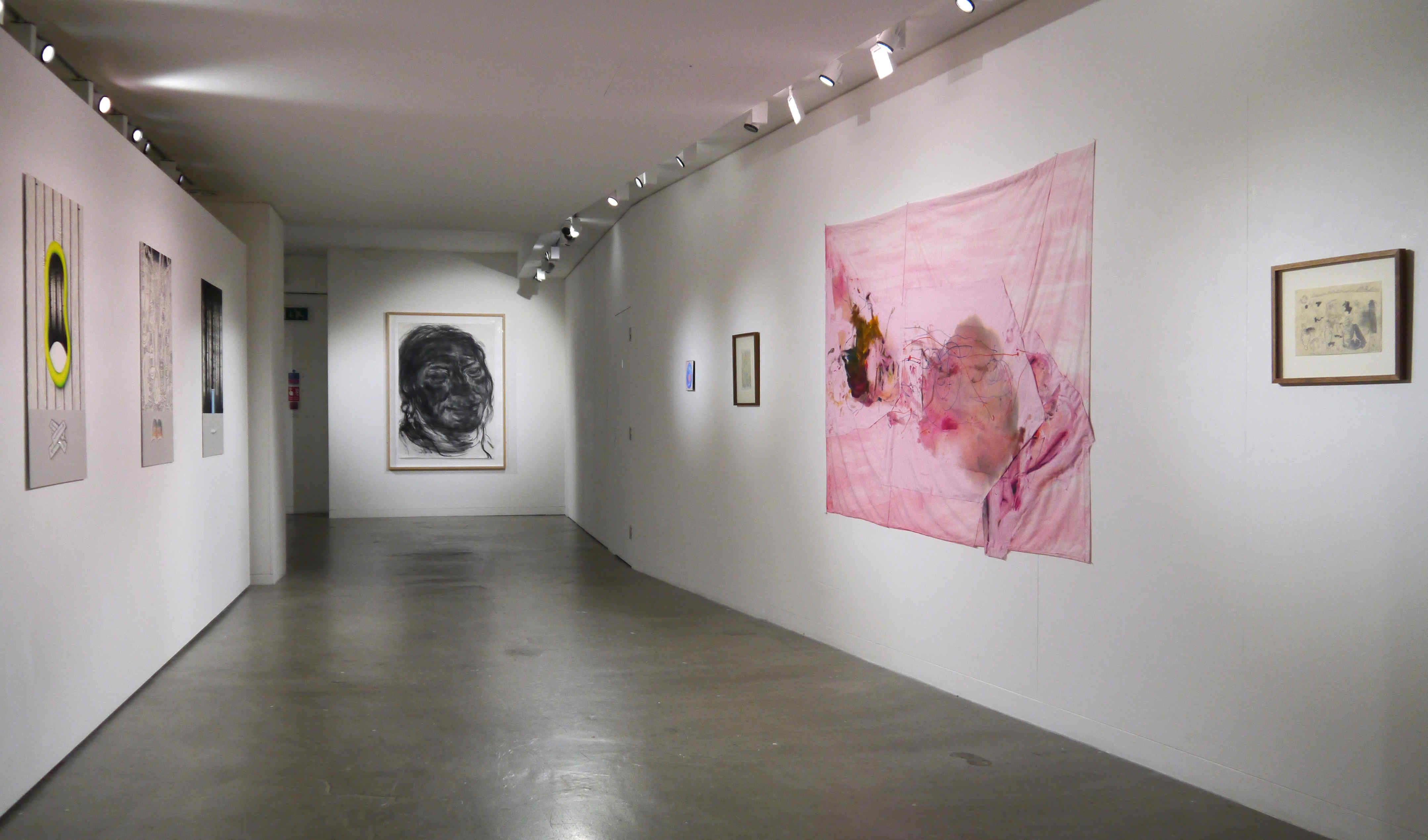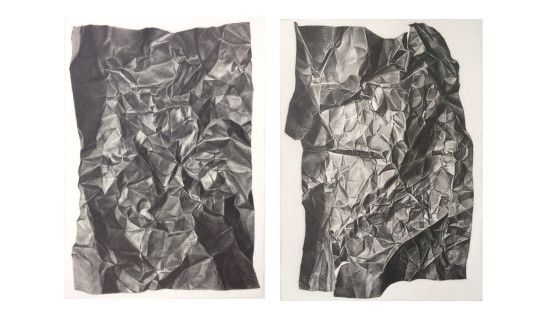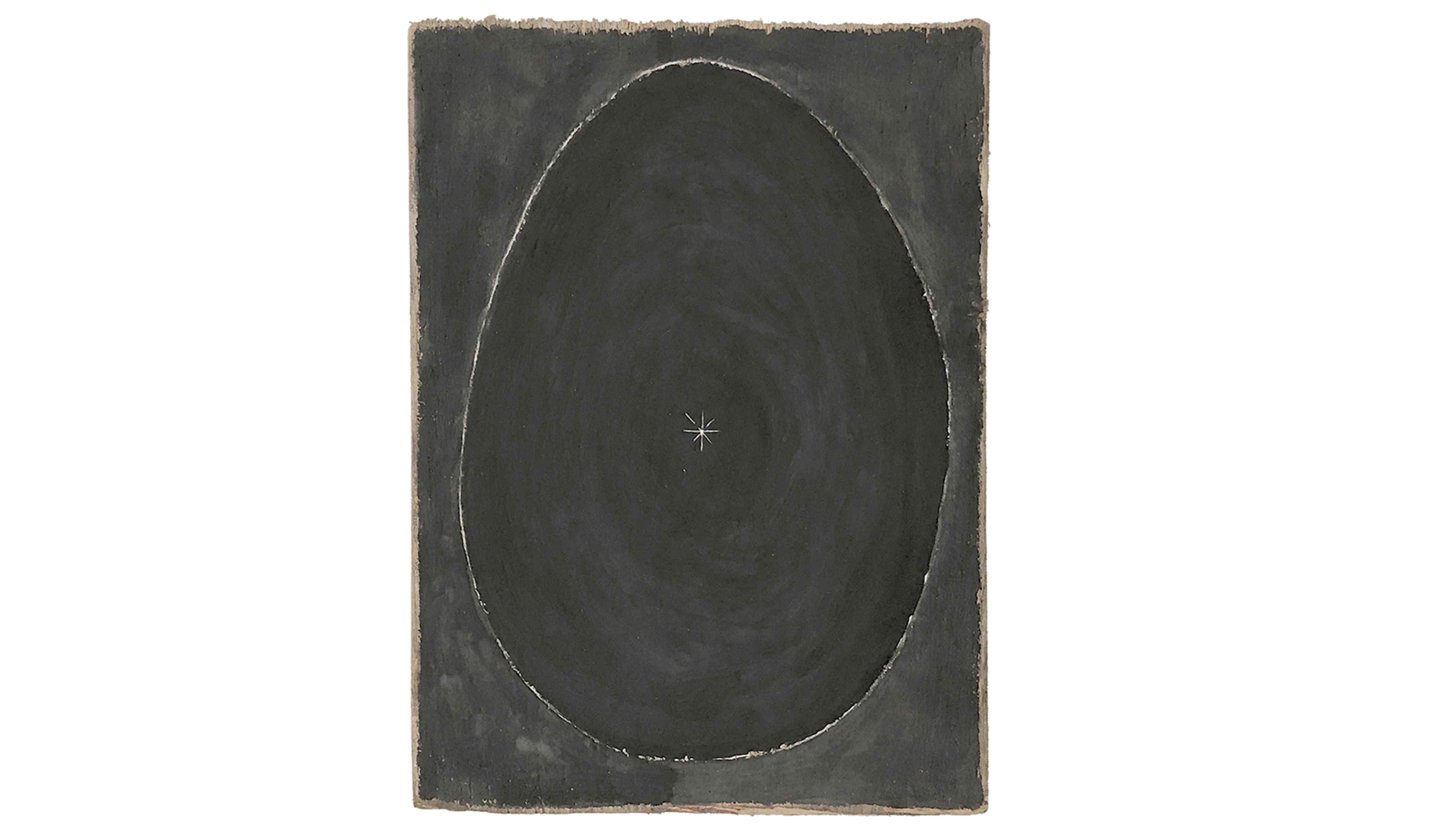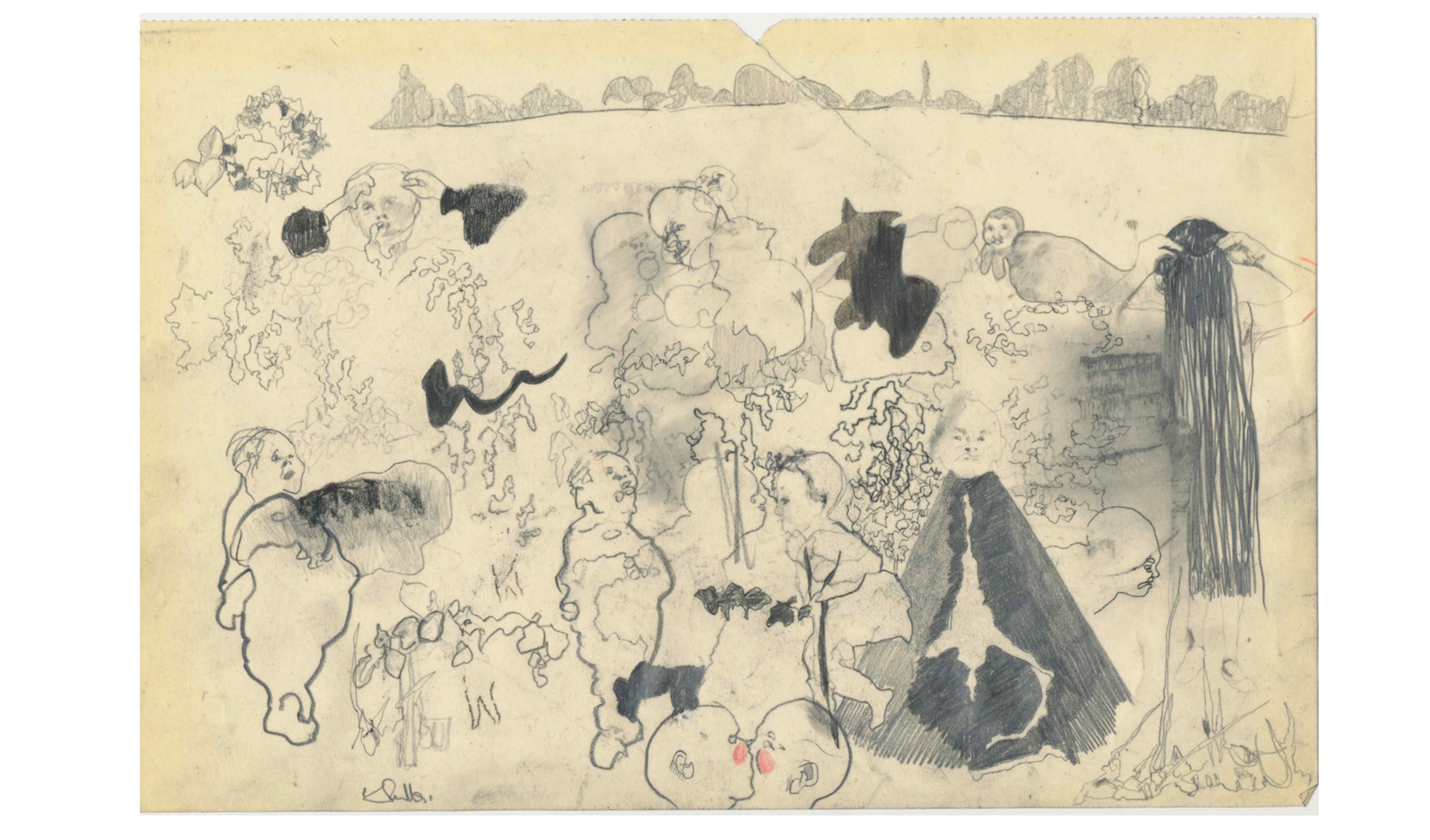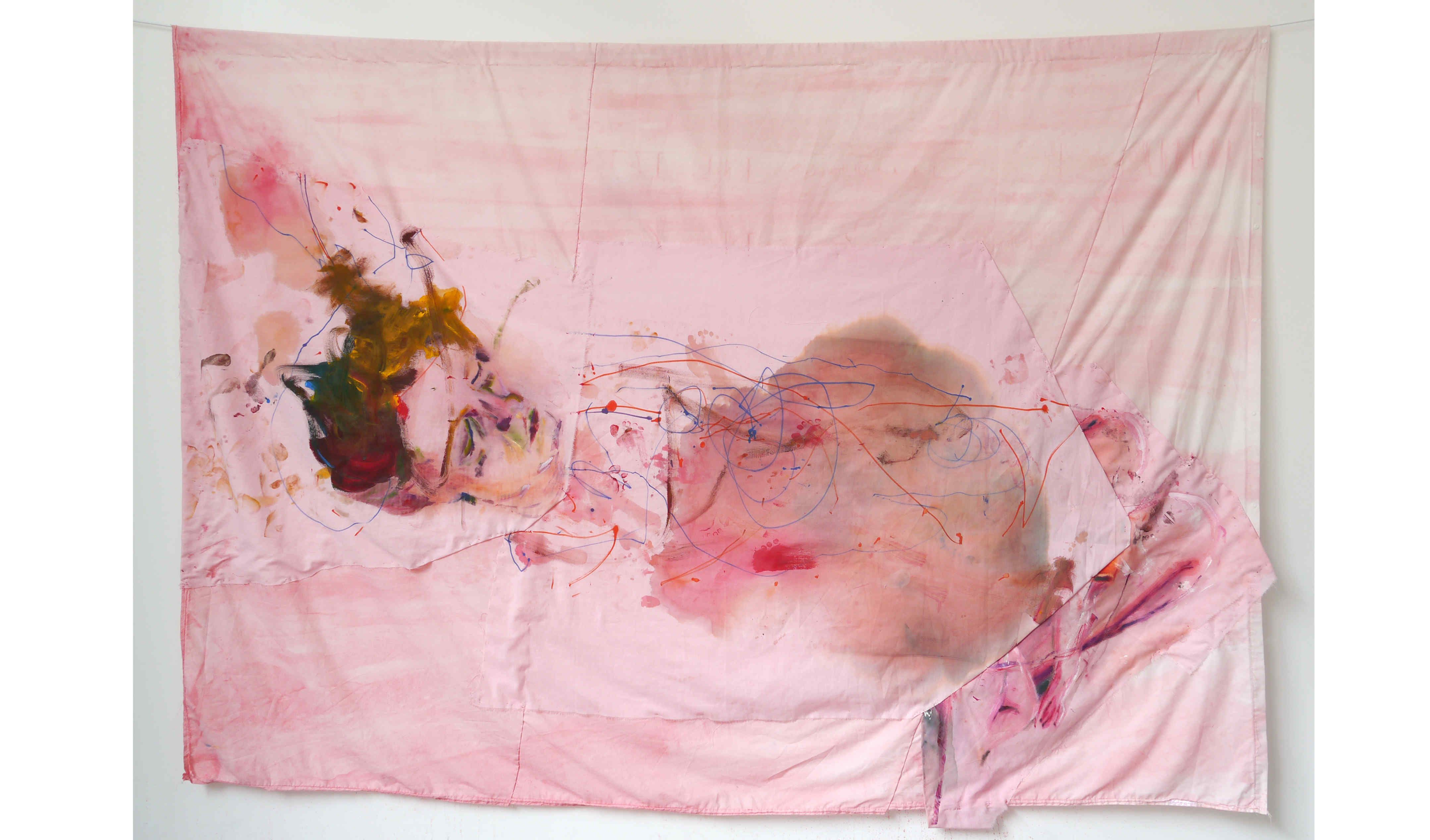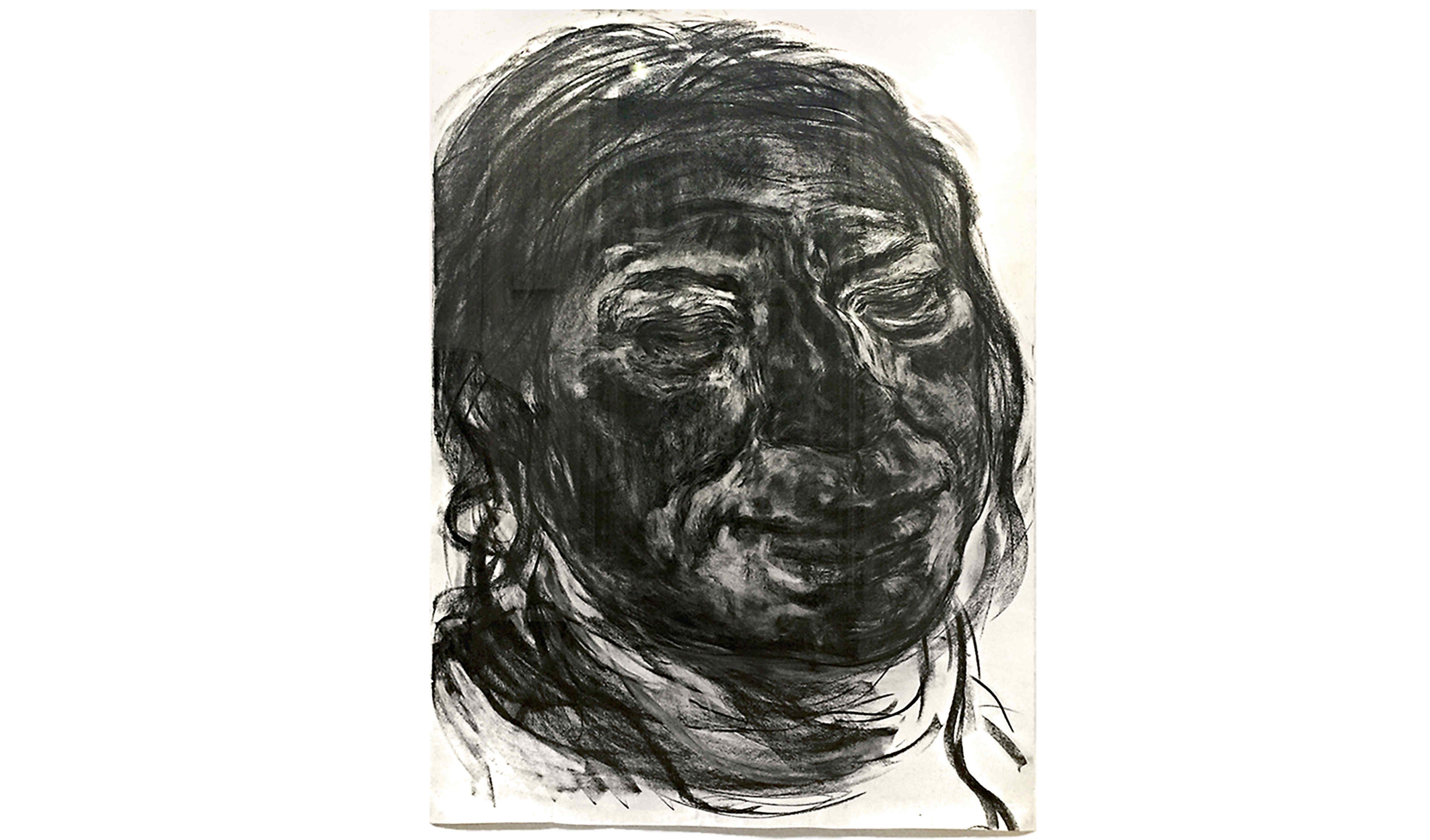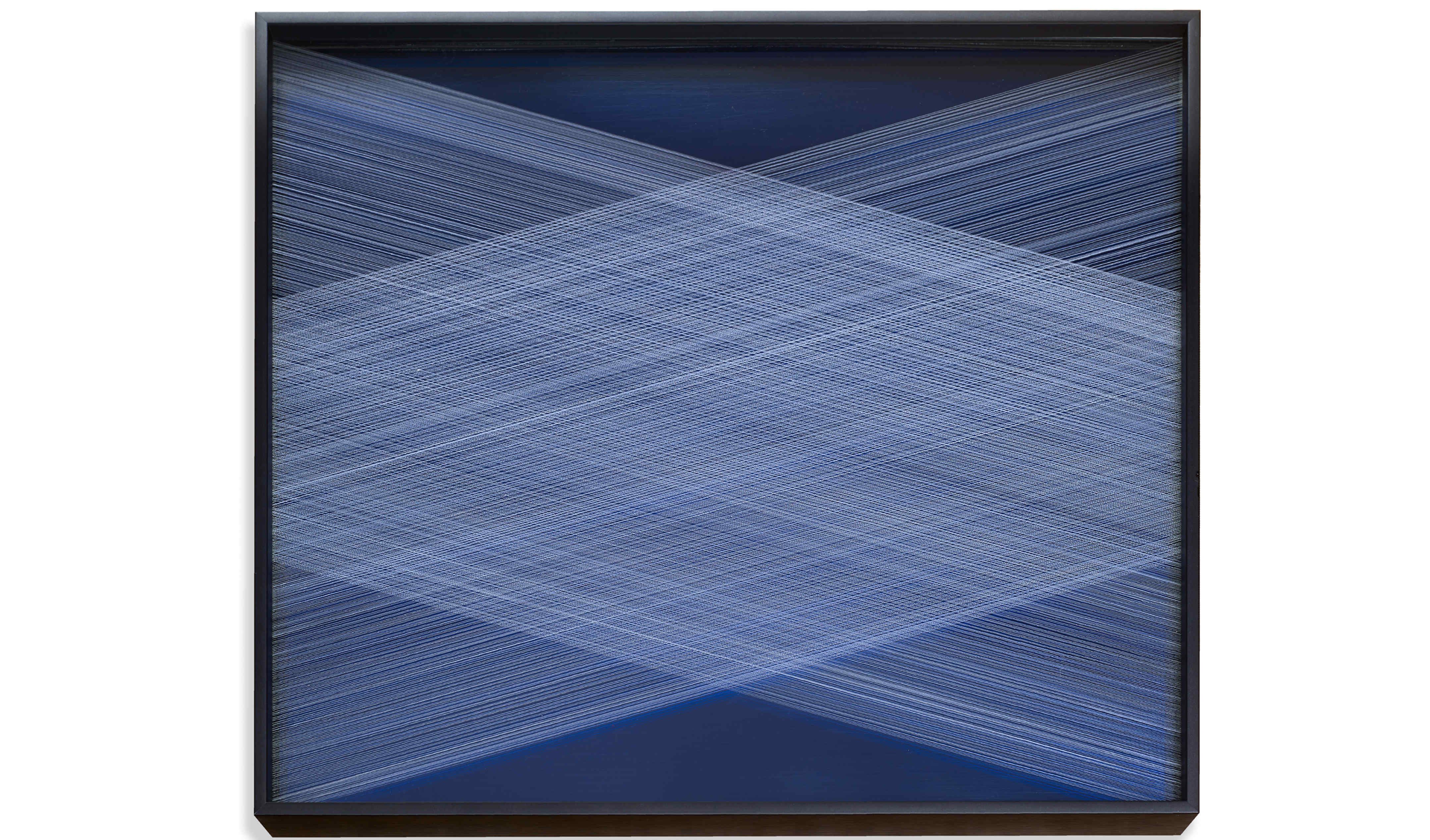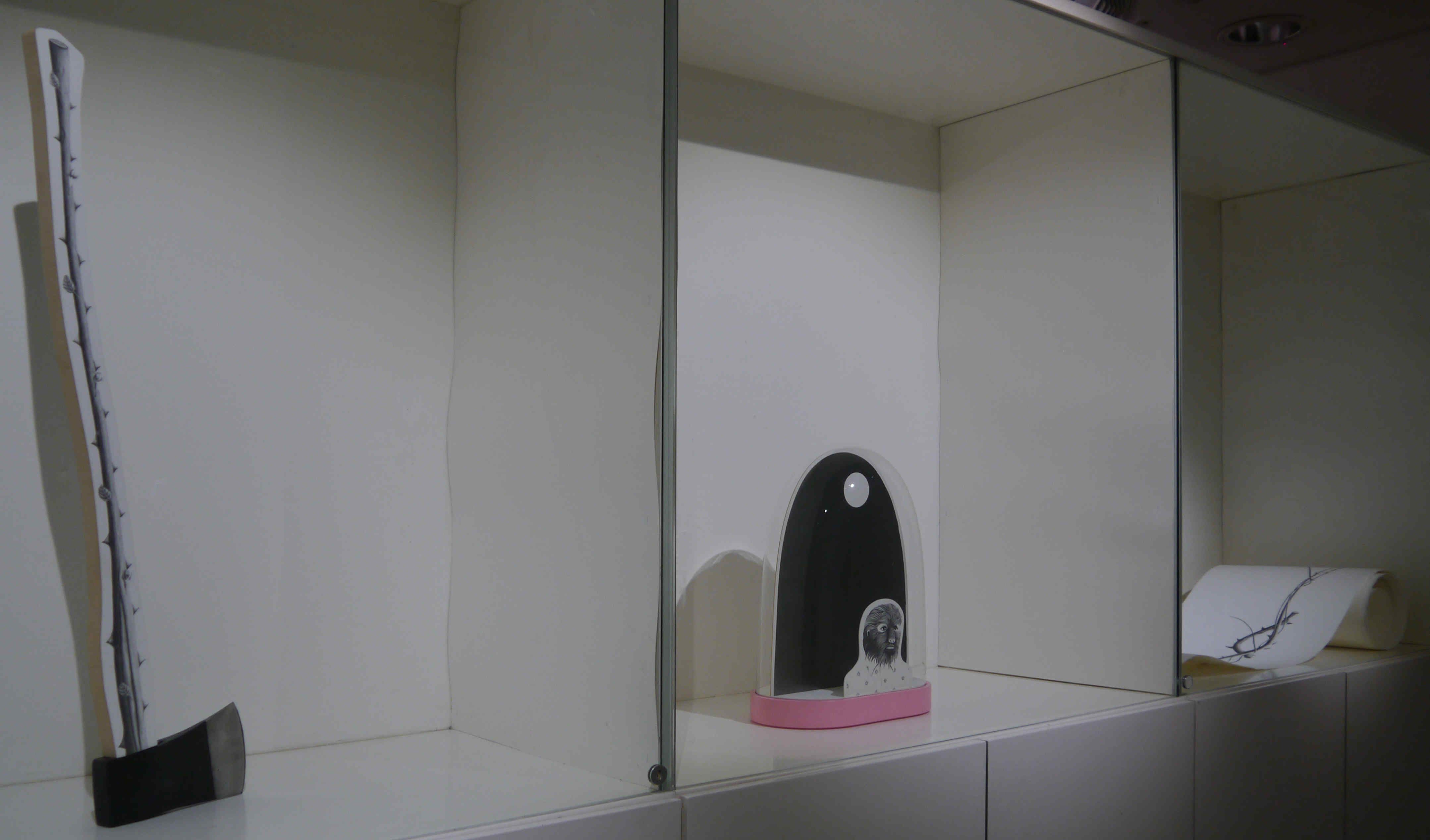The Flesh of Thought
25 September - 1 November 2019
Artists in this exhibition
Zoe Dorelli Mary Grif fiths Mindy Lee Robin Mason Stephen Palmer Cat Roissetter Anita Taylor Marianne Walker Sarah Woodfine
Curated by Marianne Walker
The Flesh of Thought is an exhibition of drawings. It is built around the idea of drawing as a form of incarnation, how it is able to put flesh on the bones of thought. Regardless of any delicacy of technique, the works included concentrate on the mucky fight for their own meaning, a grungy disegno.
To draw is very human. Charcoal depictions of lions in Chauvet Cave from around 37,000 years ago attest
the deep history of this form of communication. Even now in the 21st Century, when our digital and “meatspace" co-ordinates can vary wildly, the importance of drawing as a tool of actualisation continues.
Each of the artists included in the exhibition are linked through their contemporary practice of this particular medium, be that across two or three dimensions, with graphite, marker pen, sewn and scored marks. Here be snakes and monstrosity, mythic journeys, stains, leaks, true grit and the cool precision of sci-fi etched lines:
Zoe Dorelli’s 21st Century hermetic drawings reference both the tradition of alchemical and ancient Tantric drawings. They are elegant and diagrammatic, yet fleshy, depictions of the process of personal actualisation, externalised and shared through the use of universal symbolism.
Mary Griffiths's practice encompasses different approaches to drawing. Here, her work uses contemporary human made materials to explore beyond the use of the graphite pencil. Inscribed geometric lines etched into perspex hover over a deep space blue background. Their forceful delicacy and ferocious precision seem machine made but are, in fact, scored by hand. The result is an exploration of familiar drawing techniques but across new materials and dimensions.
Mindy Lee’s work has an immediate and striking physicality. A reclining figure emerges through the application of materials that stain or puncture the pictorial surface it is made on, a bed sheet. Her drawing calls to mind the smoky image on the Turin Shroud and is similarly embedded in the fibres of its background.
Robin Mason’s drawings of mysterious journeys seem to be strewn with clues that as viewers we need to understand or risk being lost forever. The smoky aesthetic of his landscapes calls to mind early animation and its cheerful noir. This visual language is disrupted by the inclusion of simplistic cartoony forms that cause a pictorial hiccup through their contrasting style. These forms act as a visual invitation into the drawing even as they puncture the picture planes of fore, mid and background.
Stephen Palmer’s work exudes a quiet commitment to the practice of drawing. His works are as devotional, at least in the time spent making the work, as any illuminated manuscript. The gravitas of the carefully built graphite lends authenticity to the subject matter of the work, humble crumpled pieces of paper. These palimpsests of process are deliberately manufactured by the artist as subjects for drawing. Their fictional reality is authenticated through the hours dedicated to their study, hours that remain tangible in the finished work.
Cat Roissetter's work contains qualities of both innocence and the grotesque. The olive oil that the artist applies to the surface of her paper gives it a vintage fragility. This quality of history is echoed by her expressive drawing style and the varied characters that populate her work. These characters hark from an internal past and are metabolised through the drawing process onto the negative space of the page.
Anita Taylor’s monumental charcoal drawing materialises a paradox of the human condition, the tension between the act of looking and the awareness of being looked at. Confrontational in in proximity to the picture plane, her work invites an understanding of vulnerability. The subtly reserved facial expression is indicative of the interiority of the sitter. The private self is clearly being protected even if one is allowed to get up close and personal with the subjects external form.
Marianne Walker’s pencil drawings are applied across the surfaces of fragmentary paper clay sculptures. While these forms owe a visual debt to medieval devotional sculpture, the drawings contain both comic and retro-futuristic references. The act of applying two dimensional drawing across three dimensional forms binds these disparate elements into a new 'thingness' where they embody a new material reality of their own.
Sarah Woodfine's graphite drawings on paper combine a sense of material fragility with the quiet savagery of her uncanny subject matter. Brittle twigs morph into supple snakes that encompass the three dimensions of their paper ground, a young werewolf is represented on the cusp of his maturity and monstrosity. Her works embody the potential for change, no matter how violent the process. They contain both the charm and glamour of the fairy tale, words used here in their oldest, magical definitions. All is not what it seems.
Individually, the works embody their own definite characters. Collectively, they congregate into a vernacular gothic narrative. These drawings contain a sense of fear and wonder, curiosity and a delight in metamorphosis. Together they explore the medium of drawing by putting new flesh on the bones of 21st Century thought.



